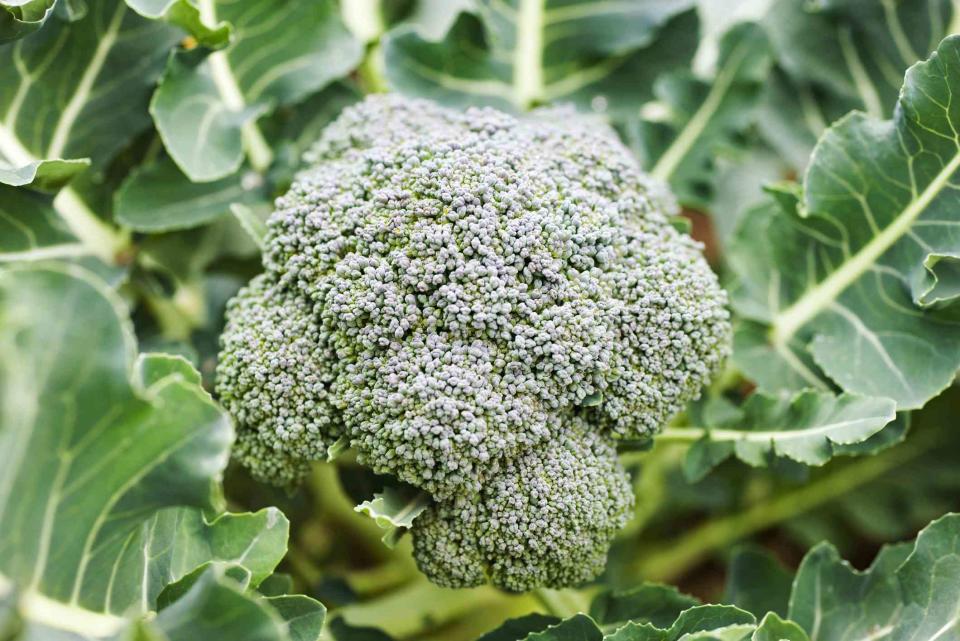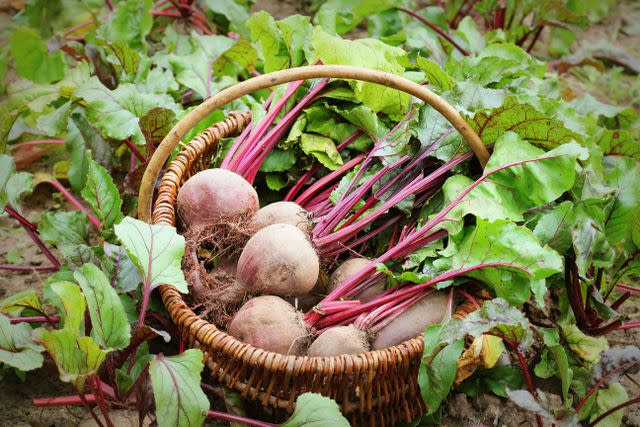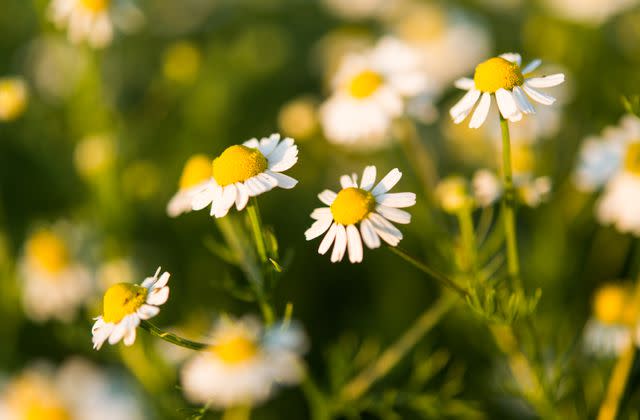8 Best Broccoli Companion Plants for a Healthier Crop
Grow your broccoli alongside these companion plants to improve soil and prevent pests and disease.

ZenShui/Laurence Mouton/Getty Images
A popular cool-weather vegetable, broccoli is a wonderful addition to any vegetable garden. Like many other cruciferous vegetables, pests like to munch on young broccoli seedlings through maturity, making it a tricky plant to grow. Companion planting can help foster a healthier crop by warding off pests, reducing weeds, and providing essential nutrients to the soil.
Meet Our Expert
Heather Kibble, homegrown sales manager for Sakata Seed America, Inc and a National Garden Bureau member.
Chelsey Lenczyk, home and farm market manager for Bejo Seeds Inc., a vegetable seed breeding and production company and National Garden Bureau member.
Related: The Best Companion Plants for Peppers, Plus Tips to Ensure a Flourishing Crop
Why You Should Consider Companion Planting for Broccoli
Growing broccoli from seeds or seedlings takes less than two months, but before you can reap what you sow, it's possible pests like aphids, flea beetles, and cabbage maggot flies may feast on the leaves, weakening the plant as it grows. Growing broccoli companion plants can provide natural pest control by staving off unwanted critters and insects. "Companion plants can repel pest insects and attract pollinators, leading to a healthier crop with better yields," says Heather Kibble, homegrown sales manager for Sakata Seed America, Inc.
Before you dig in, you'll also want to consider plants that share the same growing conditions as broccoli to ensure a successful planting. "A good companion plant obviously brings benefits to the main crop, but also should fit the criteria of liking the same season, soil, sun, and water requirements," says Chelsey Lenczyk, home and farm market manager for Bejo Seeds Inc., a vegetable seed breeding and production company. "You want these plants to work within your planting scheme."
Best Broccoli Companion Plants
Consider planting these broccoli companions near your broccoli crop.
Beets

Vaivirga / Getty Images
Both broccoli and beets are cool-weather vegetables, but beets need underground space, whereas broccoli doesn't, making them wonderful garden pals. "Beets can be planted in between your broccoli rows and harvested before your broccoli is mature," says Kibble. "Beets do not take up much space, so they partner well with the larger broccoli plants." Beets are usually ready to harvest within two months after planting. Bonus: "Both the beet leaves and the roots are tasty, and can be harvested at any size," she says.
Related: 10 Hardy Winter Vegetables to Plant in Your Garden
Garlic
Broccoli drizzled with roasted garlic can make for a delicious side dish—and they make a good pairing in the garden, too. "Garlic can repel aphids, snails, and flea beetles, all of which can feed on broccoli plants directly or transmit diseases while feeding on the plant," says Lenczyk. If there are any fungal diseases in the soil, garlic can also be beneficial. "Garlic has microbial properties that could help keep mild cases of soil diseases at bay," she adds.
Related: You Don't Need a Garden to Grow Garlic—Here's How to Do It Indoors
Onions
Similar to garlic, onions have a pungent smell and they act as a natural pest control. "Onion plants can be a good deterrent to deer, skunks, and other mammal four-legged critters," says Lenczyk.
Lettuce
Lettuce and broccoli both love growing in the cooler seasons. Lettuce can help suppress weeds by covering up soil space while broccoli shoots upwards. "Lettuce loves the shade provided by larger broccoli plants and both prefer to be grown in the cooler seasons of early spring or fall," says Kibble. A bonus of growing lettuce is you can start picking the leaves for salads within less than a month of planting. "You can begin harvesting the outer leaves of a leaf lettuce as early as two to three weeks after germination, just be careful to leave the center of the plant for future growth," she says. "You should be finished harvesting lettuce long before your broccoli plants mature."
Spinach
Spinach, like lettuce, is a cool-season crop and grows low to the ground. Broccoli and spinach grown together complement each other, since they're not competing for resources. "Since spinach is shallow rooted and broccoli roots grow deeper into the soil, they do not compete for nutrients in the soil, thus making them nice 'neighbors' to grow together," says Lenczyk.
Chamomile

ksena32 / Getty Images
Chamomile is a lovely herb with pretty flowers that attract beneficial insects to the garden. "I like to include chamomile in the garden; the flowers attract pollinators and then can be harvested for tea," says Kibble. The flower is compatible with broccoli because chamomile doesn't take up much space. "The plants are small and delicate, and fit right in among spring-grown veggies like broccoli and lettuce," she adds.
Mint
Broccoli and mint may not be a common culinary pairing, but in the garden, mint attracts beneficial insects and wards off unwanted ones. Mint attracts ladybugs, who eat larvae, and repel flea beetles and cabbage flies, Lenczyk says. Make sure to contain mint wherever you plant it, whether it's in a pot or raised bed, as mint loves to spread. "Mint must be controlled by planting in fixed beds or containers," she says. To reap the rewards of companion planting with herbs, "you’ll need to leave a portion of the herbs unharvested so they flower and create an attractive feeding station for the good bugs," Lenczyk says.
Marigolds
Marigolds are bright-colored pom-pom-looking blooms in shades of yellow, orange, and red that are known to ward off pests and entice beneficial insects. "Marigolds add a bright pop of color to the veggie garden, attract pollinators and repel some pests," says Kibble. When selecting marigolds to share space with broccoli, "be sure to select compact types, not the taller cut flower types when using as a broccoli companion," says Kibble.
Tips for Growing Companion Plants With Broccoli
Gardening requires plenty of patience and understanding of your local growing region. Knowing the amount of sunlight your garden space receives as well as soil conditions will influence how well your veggies thrive. Broccoli companion planting is about practice, placement, and patience. Here are some tips to set your edible garden for success.
Give Broccoli Space
Over-planting veggies is easy to do, especially when you see plenty of soil after sowing all the seeds. You need to envision what the landscape will look like when all of the plants are mature. Adhere to the seed packet or seedling tag and give broccoli their required space preferences. "Broccoli plants like their space—I recommend 18 inches to 2 feet between plants," says Kibble. "This gives the plants room to produce large primary broccoli heads and side shoots and encourages air circulation."
Have a Garden Journal
Designing a garden space and taking ample notes during the process can provide important insight at harvest time. You may think you'll remember what you planted—the variety and date—but as the landscape changes, you may be surprised that it's not always so obvious what you planted months prior. Writing down what is working and what isn't will help guide you each season and year after year. "Keep a journal of successes and failures—both will teach you something," says Kibble.
Choose Vegetables and Herbs You Like to Eat
Many vegetables and herbs pair well with broccoli, but you may not want to grow or eat them. "Pick things that you can use or would like to share with family and friends, because, at the end of the day, it is another crop that you are caring for," says Lenczyk.
Be Prepared, Not Everything Will Survive
Every garden space and every growing season is distinct. What may be a successful variety one year may be problematic another. Approach companion planting with an open mind and know that not everything will grow according to plan. "Each space is a little different and you won’t have instant success with everything," says Kibble. Expect that some plants may not survive, and know that It's OK. "Any seasoned, skilled gardener has seen a lot of plants die and made some unfortunate companion plant choices," says Kibble.
Read the original article on Martha Stewart.

